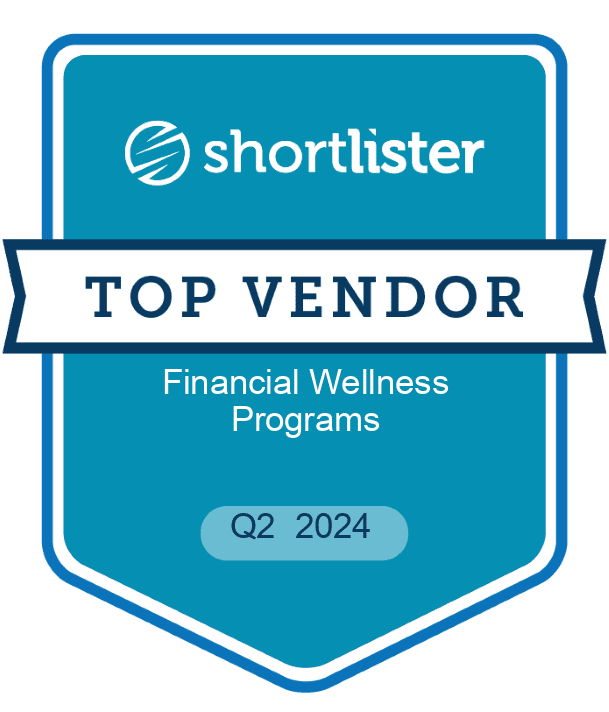Help Employees Before & After a 401(k) Loan
Cash-strapped employees are looking at all options to make ends meet, but are they coming to the right conclusions?

The Current State of Employee Financial Well-being in the U.S.
U.S. households are struggling to pay their bills, leaving zero money to grow their savings. The news tells us that inflation is dropping, but that isn’t what our grocery, insurance, gas, or electricity bills are telling us. Meanwhile, there are seemingly endless articles and interviews in the media forecasting that Americans are heading for a retirement savings crisis. Just as employees should be saving more, the exact opposite is taking place, as loans against 401(k) savings are growing to record highs.
What Employees Desperately Need, Employers Can Provide
The retirement crisis being talked about in the media is real. The problem is that employees may find it hard to focus on a problem in the future when they have a problem demanding attention today. They need a balanced budget with positive cash flow, and in the absence of that, they are tapping into their savings and considering options such as loans or withdrawals against their employer-sponsored retirement accounts. Before this trend gets worse, employers should consider requiring employees to have a session with an MSA Money Coach to discuss the repercussions of tapping into retirement savings and to ensure other options have been considered.
Unbiased Financial Well-Being Services
The MSA financial well-being program features unbiased phone conversations with expert Money Coaches. The money coaching team has completed over 1.3 million coaching sessions and averages over 20 years of experience. The program supports “over 74% of the Fortune 100 and 52% of the Fortune 500”.¹
In 2023, the top reason employees reached out to MSA was to speak with a Money Coach to discuss budgeting challenges.² When an unbalanced budget with no free cash flow is threatening an employee’s longer-term goals, such as saving for retirement, a coach typically walks through the following three-step process:
Step 1: Consider Each Option for Addressing a Household’s “Budget Crisis”
A 401(k) loan might seem like a quick and easy solution to an immediate problem. Unfortunately, if the root cause of the problem isn’t addressed, an employee might take more than one loan against their 401(k) savings (if allowed) or tap into other savings. All the while, taking control of spending is the issue that actually needs to be addressed. A coach will help an employee – and their spouse or partner – assess options for regaining control of their household budget, which includes discussing the pros and cons of different options from both a short-term and long-term perspective.
Step 2: Educate the Employee on the Pros & Cons of 401(k) Loans
The Pros
Eligible 401(k) loan participants can generally take out up to 50% of their savings and/or up to a $50k maximum per year, depending on the rules of their employer’s plan. There are a number of positive considerations:
- Convenience: Requesting a loan is usually a simple process with minimal documentation required. (Credit score is not a factor.) Repayment is typically done with a payroll deduction.
- Interest Expenses: The interest you pay is not to a bank but goes back into your 401(k) account. Most plans charge interest equal to the Prime Rate plus an additional 1-2%.
- Taxes: There are no taxes to be paid or penalties for taking the loan.
- DTI Impact: 401(k) loans don’t impact an employee’s debt-to-income ratio.
The Cons
Many employees may not even get to the “cons” of a 401(k) loan if they aren’t speaking with the right resource. The following are critical considerations:
- A loan can be risky if a borrower leaves an employer. If a borrower leaves a job due to a layoff or an opportunity, the loan often needs to be paid in full within a shortened time frame.
- Withdrawing money can impact your long-term retirement savings goal. Lost earnings can affect the amount of savings needed or the age at which an employee can afford to retire. Also, most borrowers don’t contribute to their retirement plans while making loan payments.
- Employees who don’t address the root cause could set themselves up for more significant financial stress. Tapping into retirement savings might provide some short-term relief, but not fixing the root cause could lead to the employee taking a second loan in the future or continuing to deplete other sources of savings.
Step 3: Support Employees Regardless of the Action Plan They Pursue
If an employee meets with a Money Coach and decides to take a 401(k) loan, at least they have explored some pros and cons of this action and know they have an unbiased resource they can use in the future. Most 401(k) loans have a repayment period of five years, and a lot can happen over that time frame. An employer or plan administrator prioritizes the well-being of employees when they provide a resource that can be utilized at any time to address whatever new budget or financial well-being challenge impacts the employee.
The Bottom Line
Employers are in an excellent position to help employees facing a budgeting crisis. MSA Money Coaches can help employees assess their options, educate them on the repercussions of using retirement savings, and address the underlying issues. HR leaders and plan administrators who bring the right financial well-being resources to the aid of their workforces sooner rather than later can transform the financial health of American workers.
To learn more about the MSA financial well-being program and our guaranteed results, schedule a demo or contact us at 800-984-6811 to get started.
¹ My Secure Advantage, Inc., January 2024. Based on MSA plans served from 1/1/22 – 12/31/23.
² My Secure Advantage, Inc., January 2024. Based on MSA member self-reported data from 1/1/23 – 12/31/23, from members working with a Money Coach.
More Like This
Roseville, CA. – January 3, 2023 – With inflation looming at 9%, employees’ financial stress is at an all-time high.1 After the first year of improving the financial wellness benefit for all 5 million US employees in the book of business of a preeminent EAP industry leader, My Secure Advantage dramatically reduced financial stress by […]
Employers have a great opportunity to help employees IF they act now!
Employees' financial stress is rising as their debts grow and their savings shrink. They need help.
Are your employees concerned about the safety of their savings due to the banking crisis? Learn what caused it, what the Federal Deposit Insurance Corporation is doing about it, and how you can help employees.

